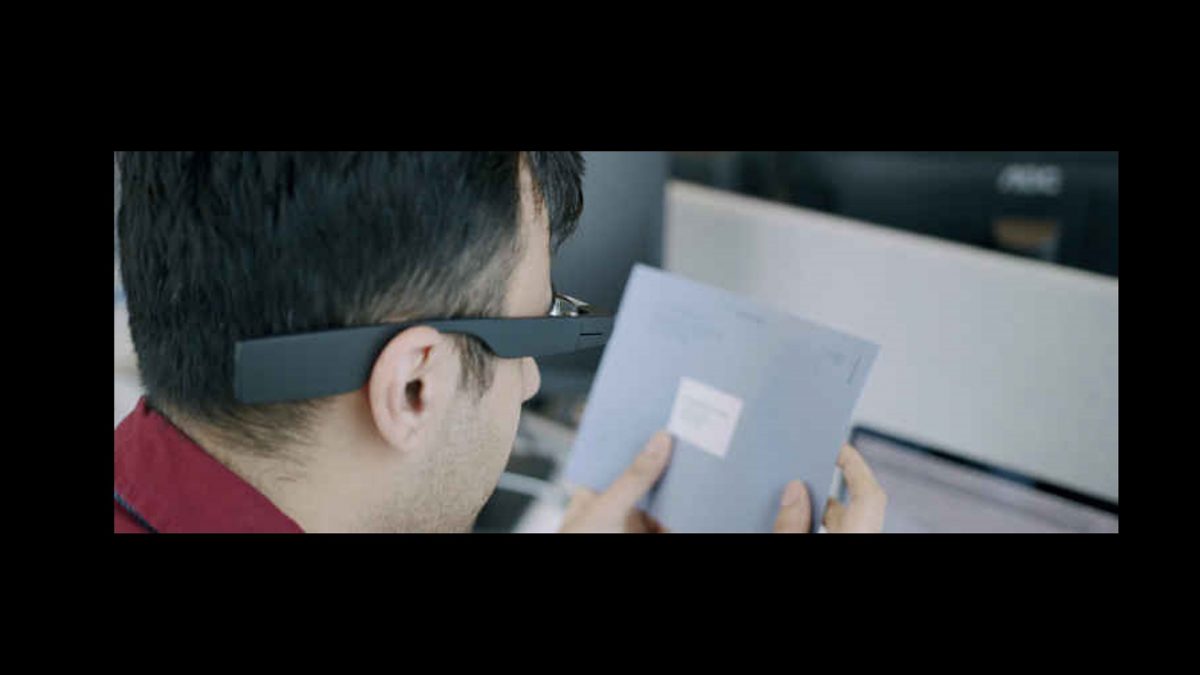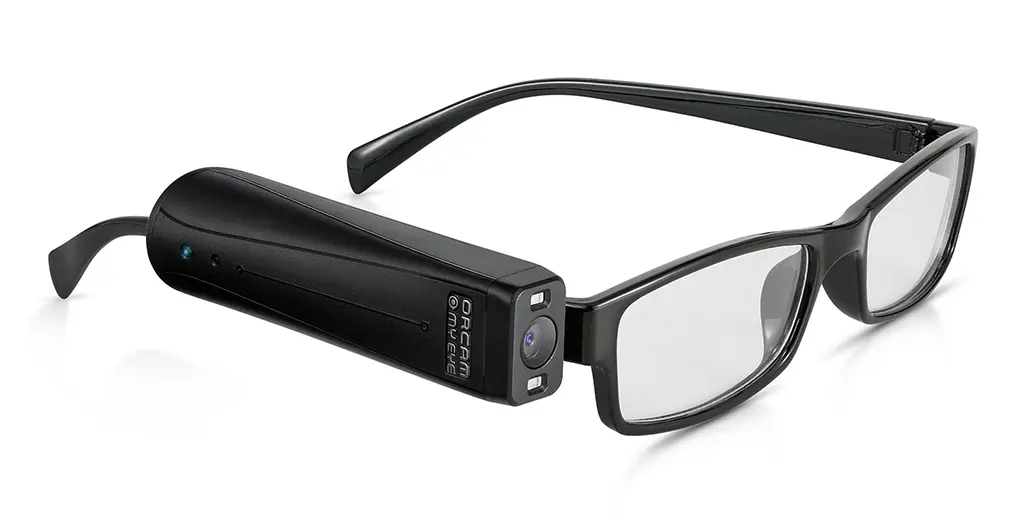OCR Devices for the Blind: Breaking Barriers with Optical Character Recognition
Wiki Article
Discover Advanced Assistive Devices for Individuals With Aesthetic Problems
The landscape of assistive innovation for people with visual problems is progressing rapidly, presenting a variety of innovative gadgets that improve freedom and interaction (Braille displays and notetakers). From smart glasses that flawlessly combine visual input with auditory support to advanced navigation applications that redefine spatial awareness, these tools are improving possibilities. Additionally, the most recent advancements in Braille technology and voice-activated systems significantly add to ease of access. Nonetheless, the effects of these developments prolong far beyond mere performance; they test traditional understandings of special needs and self-reliance. What might this suggest for the future of addition and assistance?Smart Glasses Innovations
Smart glasses stand for a substantial improvement in assistive modern technology for individuals with visual impairments. These cutting-edge gadgets incorporate numerous functions created to improve the user's communication with their atmosphere. Outfitted with cams and sensing units, wise glasses can capture real-time visual information, which is then processed and conveyed to the individual with audio comments or haptic sensations. This functionality allows people to receive prompt summaries of their environments, enhancing their ability to involve and navigate with the globe.
Furthermore, innovations in expert system have even more enhanced the capabilities of smart glasses. Artificial intelligence formulas can recognize faces, reviewed message, and recognize items, making them important devices for daily tasks. Individuals can obtain auditory hints that provide context regarding their environment, fostering self-reliance and self-confidence.
Additionally, the ergonomic design and lightweight nature of many clever glasses make them appropriate for long term usage, making sure comfort while improving performance. As these devices proceed to evolve, they hold the potential to revolutionize the means people with visual problems experience their daily lives, connecting the space in between ease of access and modern technology. The ongoing r & d in this area pledge to expand the opportunities for smart glasses, making them an essential element of modern assistive tools.
Navigating Apps and Devices
Many navigation apps and tools have actually become important resources for individuals with aesthetic problems, dramatically enhancing their capability to go across unknown atmospheres. These innovations leverage GPS functionality, audio cues, and real-time information to supply users with specific navigating help.One popular example is the Aira app, which connects individuals to experienced representatives that can provide visual summaries of surroundings and navigating advice with an online video clip feed. This solution enhances the user's spatial understanding and confidence while navigating. An additional notable tool is Seeing Eye GPS, which provides voice-guided navigating and points of rate of interest, enabling customers to accessibility crucial info concerning their surroundings.

As technology remains to development, the growth of extra advanced navigating tools promises to additional empower people with aesthetic disabilities, helping with smooth wheelchair and assimilation into varied atmospheres. Such technologies contribute in promoting a much more inclusive society.
Braille Technology Advancements
Recently, advancements in Braille modern technology have actually significantly changed just how people with aesthetic impairments gain access to information and involve with the world around them. The development of mobile Braille displays has actually transformed reading by permitting customers to connect wirelessly to computers, tablet computers, and smartphones. These tools convert text right into Braille helpful site in real-time, making it possible for seamless interaction with electronic material.
Additionally, cutting-edge Braille printers have arised, enhancing the manufacturing of responsive products. Modern embossers are much faster and more reliable, permitting the quick creation of Braille records and academic products. This efficiency decreases the time and price related to producing Braille sources, making them much more easily accessible to organizations and institutions.
In addition, the assimilation of Braille with other modern technologies, such as man-made knowledge and device discovering, has opened up new avenues for personalized discovering experiences. Voice recognition and synthesis innovations can enhance Braille, providing an inclusive technique to info dissemination.
As the need for inclusive education and office atmospheres expands, these technical developments play an important function in equipping individuals with aesthetic impairments, guaranteeing they have equivalent access to information and opportunities in numerous aspects of life.
Wearable Gadgets for Freedom
An expanding selection of wearable tools is enhancing independence for people with aesthetic impairments, using innovative options that enhance navigation and everyday living. Braille displays and notetakers. These gadgets utilize sophisticated innovations to offer real-time responses and support, promoting autonomy in different environments
Wearable technology additionally includes smartwatches that can be configured with accessibility features, making it possible for users to obtain alerts, track their areas, or perhaps require help with the touch of a button. Some devices integrate synthetic intelligence to analyze the environment, offering sound descriptions of nearby objects or people.
Voice-Activated Assistive Solutions
Leveraging voice-activated assistive remedies has transformed the landscape of support for people with aesthetic disabilities, providing hands-free interaction and accessibility to a range of tasks. These innovations make use of natural language processing and artificial intelligence to make it possible for users to do day-to-day activities via basic voice commands.
Moreover, recent improvements in voice recognition accuracy have boosted the customer experience substantially, suiting diverse accents and speech patterns. This inclusivity makes sure that even more people can profit from these technologies, cultivating a greater sense of freedom.
Final Thought
To conclude, the advancement of sophisticated assistive tools substantially improves the freedom and top quality of life for individuals with aesthetic impairments. Technologies such as clever glasses, navigation apps, Braille innovation, wearable devices, and voice-activated remedies jointly foster an even more inclusive setting. These modern technologies empower customers to browse their environments with self-confidence and involve even more completely with the globe, ultimately advertising better availability and equal opportunities for people encountering visual difficulties.The landscape of assistive modern technology for individuals with visual disabilities is developing quickly, offering a range of ingenious devices that boost freedom and interaction.Smart glasses represent a considerable improvement in assistive modern technology for individuals with visual problems. As these tools proceed home to develop, they hold the possible to transform the way people with aesthetic impairments experience their daily lives, bridging the gap between availability and innovation.In recent years, advancements in Braille innovation have substantially changed how individuals with aesthetic problems accessibility information and involve with the globe around them. These modern technologies empower individuals to browse their environments with confidence and involve more completely with the world, inevitably promoting better accessibility and equivalent possibilities for people dealing with visual difficulties.
Report this wiki page